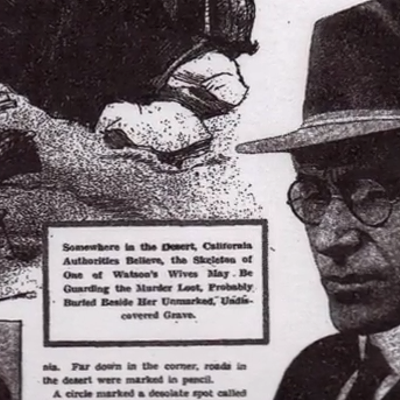In December 1812, David Thompson was settling into a new country house outside of Montreal with his wife and five children. Yet he had just finished 27 years of field work in the fur trade between Hudson's Bay and the Pacific Ocean. And during the previous winter, he had tromped from what is now Missoula to Flathead Lake to Kettle Falls. His mind must have still been reliving those long marches through the north country, because he took two days off from his mapwork to pen a pleasant article about snowshoeing for the Montreal Herald.
"The winter is now set in, and the snow lies on the ground, an incumbrance to walking," Thompson began. He wrote about the hopelessness of shoveling the stuff, and marveled at the wonderful resourcefulness of people to have invented the snowshoe — a device that, when well made, allows anyone who wishes to move freely about the countryside, in any direction, in any depth of snow. But when poorly made, he lamented, the snowshoe can become a demon's tool that causes excruciating pains to insteps, ankles and knees. To prevent such misfortunes was the object of his brief remarks. What followed was a meditation on snowshoe design, craftsmanship, meteorology, podiatry and wilderness medicine that could only have been written by a person of Thompson's experience — someone who knew all the kinds of snow, from 40-below-zero days on the windswept Canadian Shield to the white stuff produced by soggy Chinooks in the Clark Fork Valley.
Skipping right over the basic skills of bending wood and weaving nets, Thompson started with the anatomy of a finished snowshoe. Two crossbars that run in front of and behind the foot divide any shoe into three unequal parts, and the wearer must be aware of the stresses and integrity inherent in each. The part forward of the front bar needs to be as light as possible, not too long, and the netting not too close. The tension of the netting in the middle part, where the foot rests, must be braced as strongly as possible.
The heel or rear portion of the snowshoe also plays a key role. Thompson compared it to the tail of a bird, and emphasized that if it is not lined up exactly straight with the rest of the shoe, the walker's step will drift off-course, catching one shoe upon the other and taking him down. Since the shape of snowshoes varies widely, from the round bear paws favored by heavy white men to the sleek seven-footers of tribes Thompson observed in the far north, it is impossible to choose the optimum design. But in Thompson's experience, the most effective length reaches just to the breast of the wearer, and no snow shoe should be wider than 15 inches or narrower than 12.
As for the thong, everyone seems to have a different method of securing the shoe to the foot, but it must be of the softest leather, well smoked. Cinching the thong too tightly is asking for injury in the sinews of the instep and ankle, known among his voyageurs as the "snow [shoe] evil," or mal du raquete. If the foot slips too much on the stay, such rubbing will chafe the ball of the foot or blister the upper part of the toes. If the cause is a loose thong, tighten it, but if the slipping is caused by worn shoes or icy conditions, rub the netting, stay and sole of the shoe with charcoal — as long as the charcoals remains, the foot will hold steady.
On any march, some snowshoe wearers are going to get blisters. Dr. Thompson's suggestion was to wrap a bit of fine clean linen around each damaged toe — two turns seems about right.
But no matter how much attention is paid to these particulars, at the end of the day someone often pulls up lame. In these cases, Thompson offered a cure that shows just how much time he had spent out in the rough, and how determined he must have been to make steady good time on all his excursions. In fact, it can be seen as a metaphor for the larger mindset that allowed him to establish his successful circle of trade houses in the Inland Northwest, and eventually to survey and map the whole Columbia River country.
If the unfortunate victim can no longer raise his foot, Thompson wrote, he must tie a piece of cordage securely to the middle of the fore bar and grasp the other end in his hand. After slinging his rifle over his shoulder so as to walk unencumbered, he is ready to set out, lifting the bad leg and its snowshoe with the corresponding arm at every step. While this idea of becoming your own puppet master might seem outrageous to a modern wilderness camper, for Thompson it was simply a way to carry on: "I have know men lame with sprains, or wounded severely with the axe in the foot, yet urged on by necessity, and taking their snow shoes thus in their hand, have marched for 7 days, at the rate of 12 or 15 miles a day."
Breaking down the most basic elements of snowshoeing, Thompson described exactly how to pick up the feet parallel to the axes of the line of march, and to drop them with the toes pointed downward. "By this method none will be too much tired," he concluded, "and the march will be kept up with speed and spirit."
For any of us who might be flagging in the middle of this snowy winter, Thompson's example of literally pulling yourself up by your bootstraps sends a clear message: Get over it, and move along.
Some Excerpts from Thompson's Journal:
Feb 4 — Men getting aspin wood for a sled and another wood for 2 pair of small snowshoes to go as far as the portage to look after the men who were sent to Fort de Prairie and carry them provisions
Feb 5 — Turned 2 pair of small snowshoes and a sled
Feb 10 — Bercier & Le Camble returned finding the snow too deep & their snowshoes having broken
Feb 11 — Turned 2 pair snow shoes
— Journal of David Thompson from Kootanae House, at the source lakes of the Columbia River, winter 1808.
Publication date: 1/08/04






















